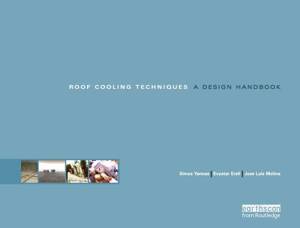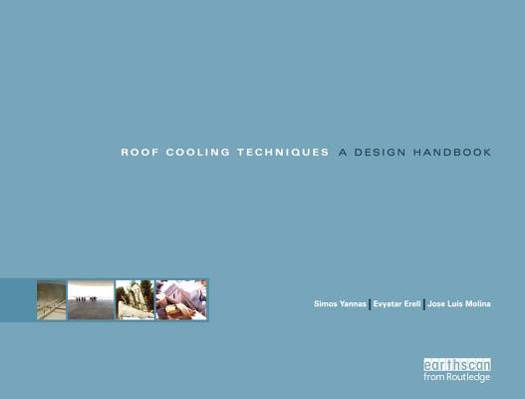
- Afhalen na 1 uur in een winkel met voorraad
- Gratis thuislevering in België vanaf € 30
- Ruim aanbod met 7 miljoen producten
- Afhalen na 1 uur in een winkel met voorraad
- Gratis thuislevering in België vanaf € 30
- Ruim aanbod met 7 miljoen producten
Zoeken
€ 108,45
+ 216 punten
Uitvoering
Omschrijving
Natural heating and cooling of buildings helps to improve energy efficiency in the built environment. This book considers the principles of roof design and specific systems and cooling techniques. The authors explain the fundamental principles of roof cooling and describe in detail the relevant components, applications, built precedents, recent experimental work and key design considerations. Specific systems and techniques are examined, including the main advantages and disadvantages of each strategy.Environmental functions are considered in terms of protective strategies and selective strategies. Protective strategies include solar control, thermal insulation, heat storage and thermal inertia. Selective strategies include radiative, evaporative and convective cooling and planting of roofs. Traditional and current roof construction practices are described, exemplified by case studies from across Europe. Including downloadable resources with software that enables readers to evaluate their own designs, this book will be invaluable for architects and engineers who wish to create buildings that are more energy-efficient.
Specificaties
Betrokkenen
- Auteur(s):
- Uitgeverij:
Inhoud
- Aantal bladzijden:
- 172
- Taal:
- Engels
Eigenschappen
- Productcode (EAN):
- 9781844073139
- Verschijningsdatum:
- 1/09/2005
- Uitvoering:
- Boek
- Afmetingen:
- 209 mm x 281 mm
- Gewicht:
- 562 g

Alleen bij Standaard Boekhandel
+ 216 punten op je klantenkaart van Standaard Boekhandel
Beoordelingen
We publiceren alleen reviews die voldoen aan de voorwaarden voor reviews. Bekijk onze voorwaarden voor reviews.











